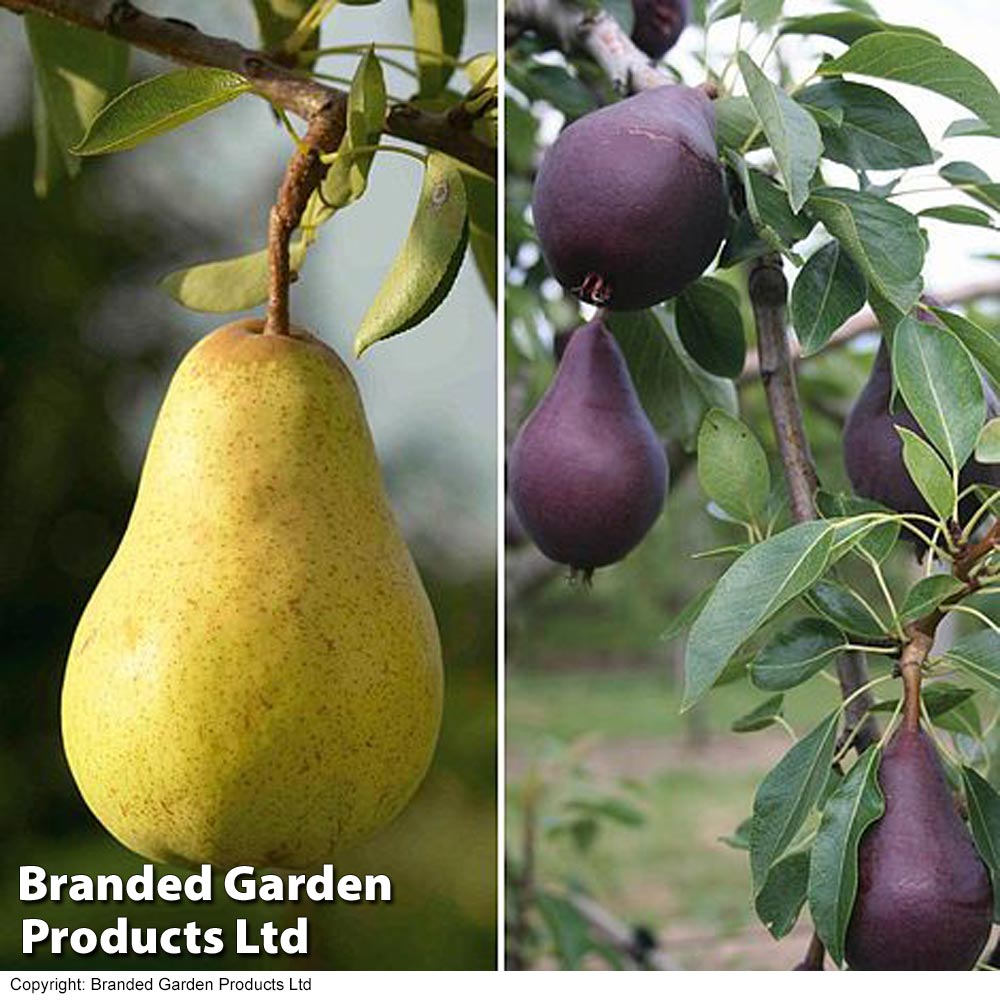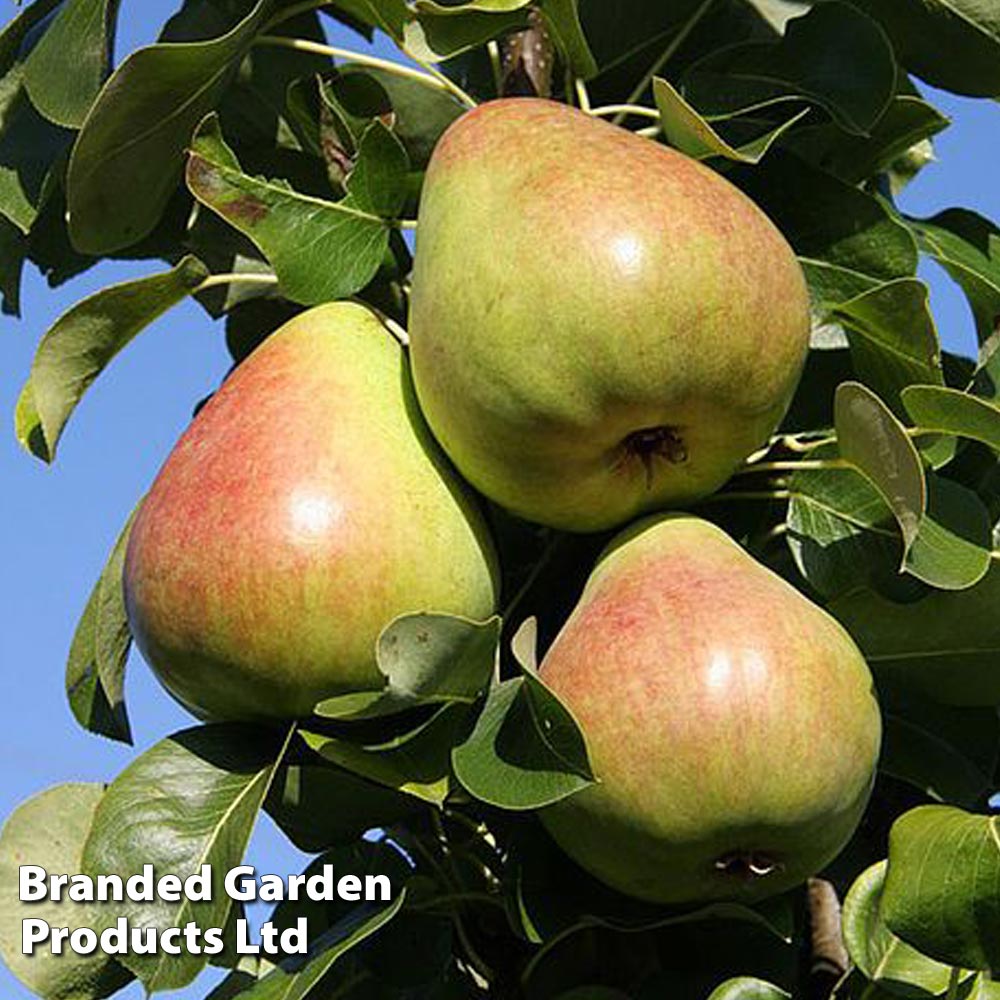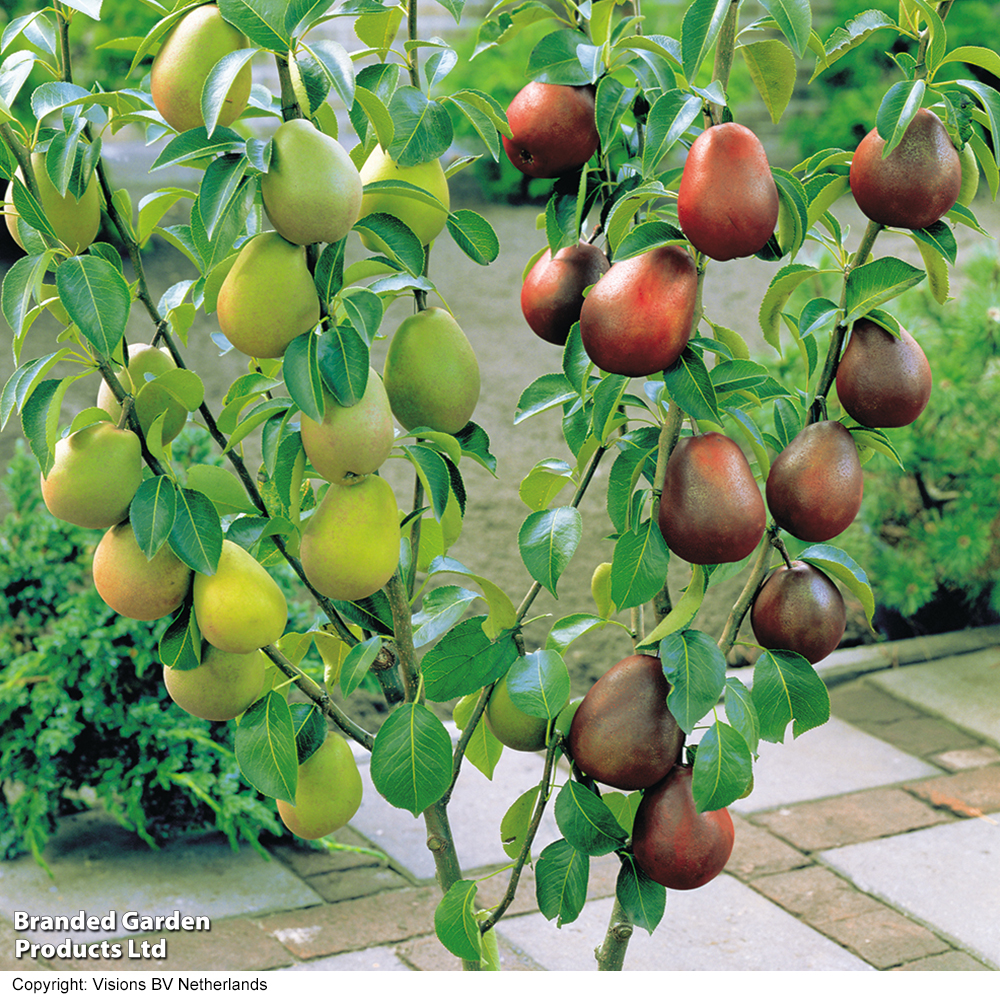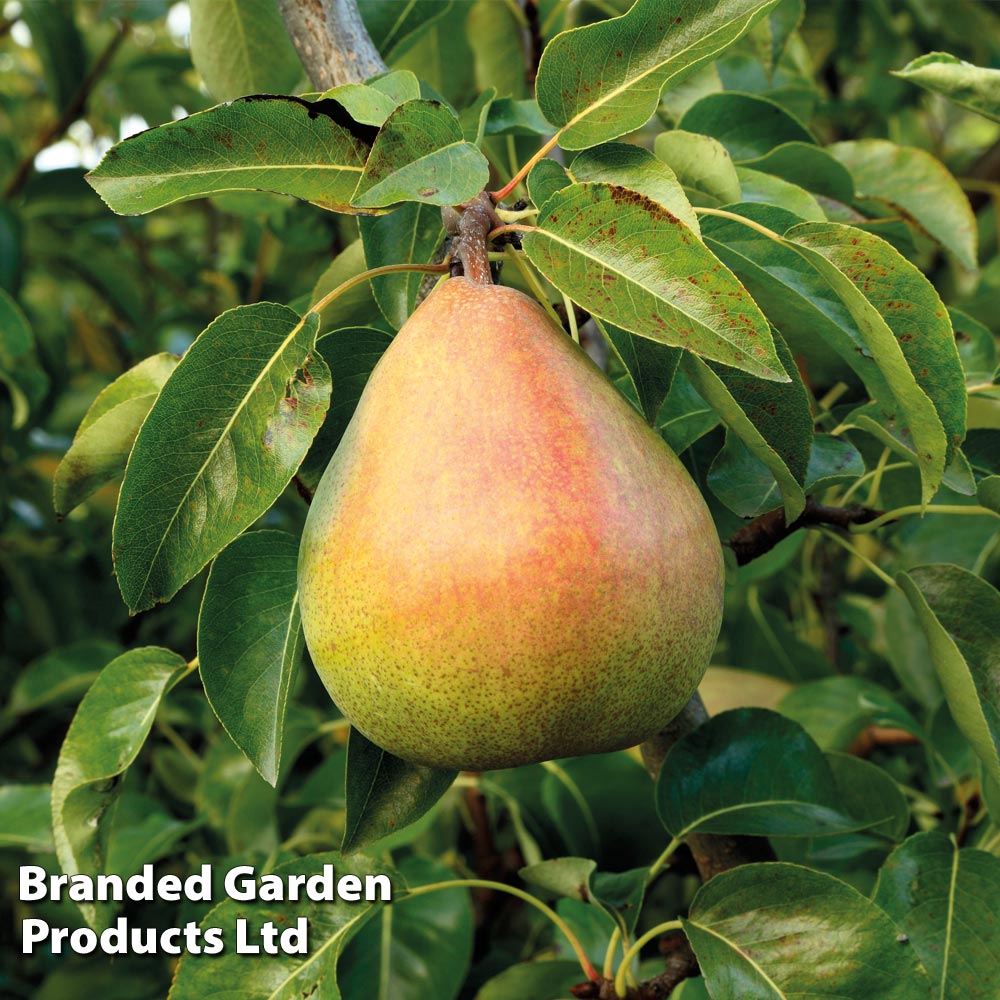This collection is the ideal choice for those looking to harvest abundant crops of delicious pears, perfect for preserving, poaching, or enjoying fresh from the tree. Plant these varieties close together to enhance pollination and boost your yields. The collection includes one tree of each: Pear ‘Williams’ Bon Chretien’ (Pollination Group 3) – Eating Pear: A hardy, early-fruiting variety that produces large, smooth, yellow pears with a sweet, juicy flavour and no grittiness. Pear ‘Red William’ (Pollination Group 3) – Eating Pear: A red-skinned variant of the classic William’s pear, offering the same sweet taste but with a more compact, slightly dwarfing growth habit. The trees are grafted onto Quince rootstocks, offering both dwarf and semi-vigorous growth options: Quince C / Quince Eline / Quince Adams – Dwarf rootstocks, reaching a mature height of 2.5-3m (8-10′). Quince A – Semi-vigorous rootstock, reaching a mature height of 3m (10′) to 4m (13′). While these varieties are not self-fertile, planting them near another pear tree will help maximize fruit production. If you can only fit one tree, ensure that a nearby neighbor has a compatible pear tree to act as a pollinator. Estimated time to first harvest: 2 years. Estimated time to reach peak yields: 5 years. Collection includes: Pear ‘Red William- Wonderful red version of one of the most popular pear varieties in the world. This red ‘clone’ is just as sweet as the original William’s pear but with the added attraction of red skin. Slightly more dwarf than the original, Red William pan set a crop on its own and will act as a good pollinator for Conference, Concorde and Comice. Pear ‘WilliamsBon Chretien- Often simply known as ‘Williams’, the fruits of this superb pear turn yellow as the flesh ripens. Pear ‘Williams Bon Chretien’ is an early fruiting variety producing large yellow non-gritty fruits with an excellent sweet and juicy flavour.
Plant pear trees in any well drained soil in a sheltered sunny position. Prior to planting, incorporate plenty of well rotted manure or garden compost into the planting hole and drive the stake into the ground to support the tree. Staking after planting may result in damage to the root ball. Plant fruit trees at their original soil level and firm them into the ground. Fasten the tree to the stake using a tree tie, and water well. Pears will produce the best crops when planted near to another pear tree to increase pollination.
| JAN | FEB | MAR | APR | MAY | JUN | JUL | AUG | SEP | OCT | NOV | DEC |
|---|---|---|---|---|---|---|---|---|---|---|---|
Flowering Period
Harvesting Period






